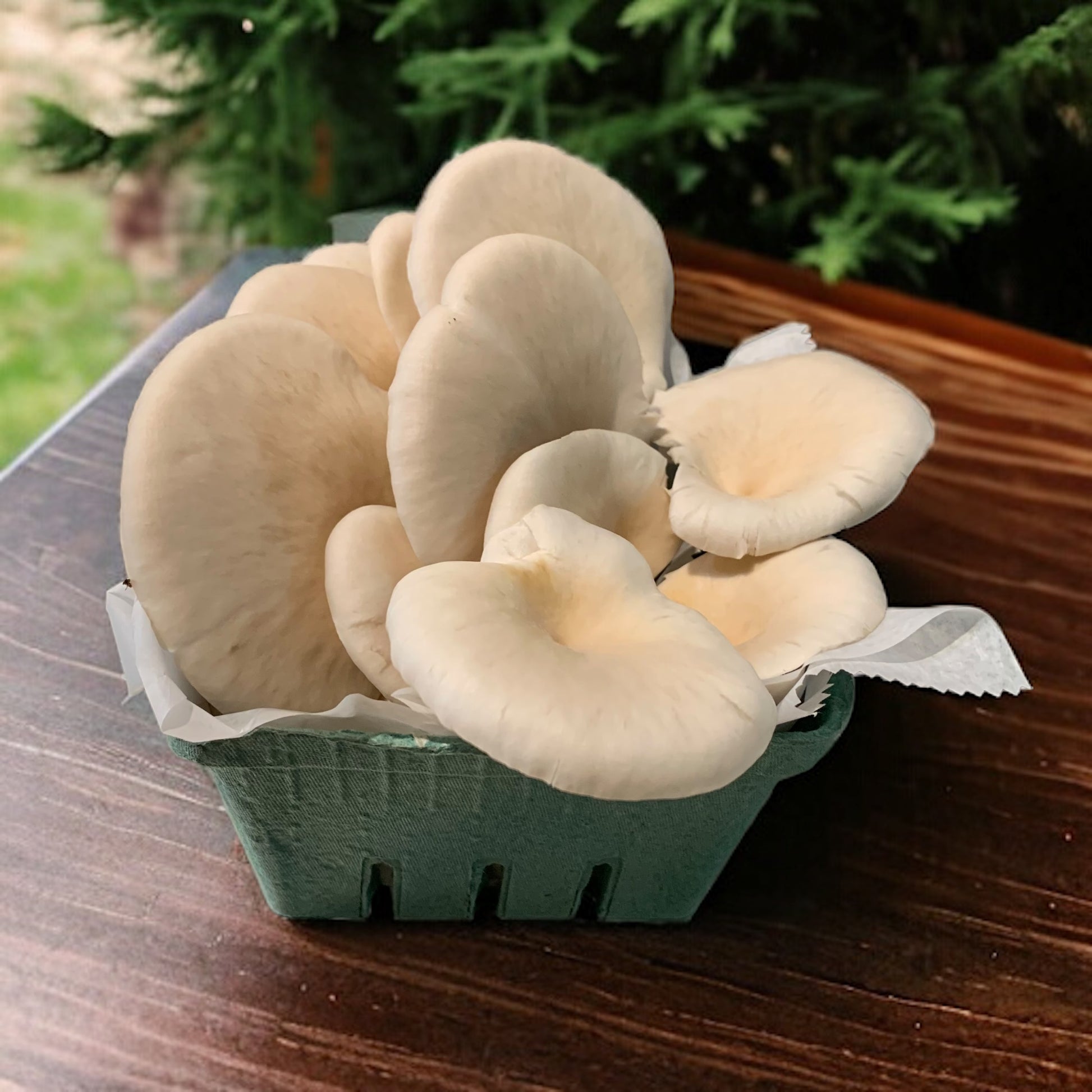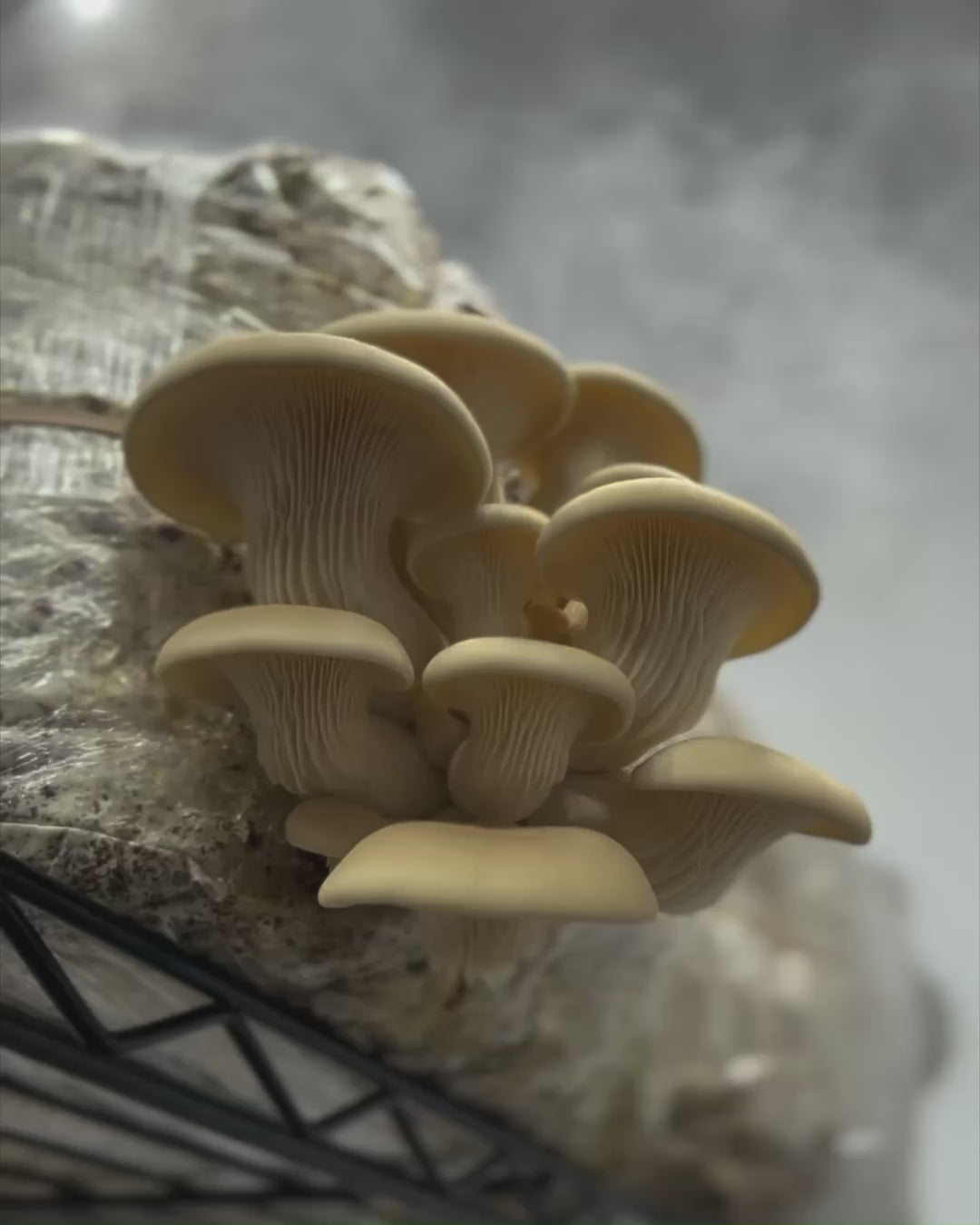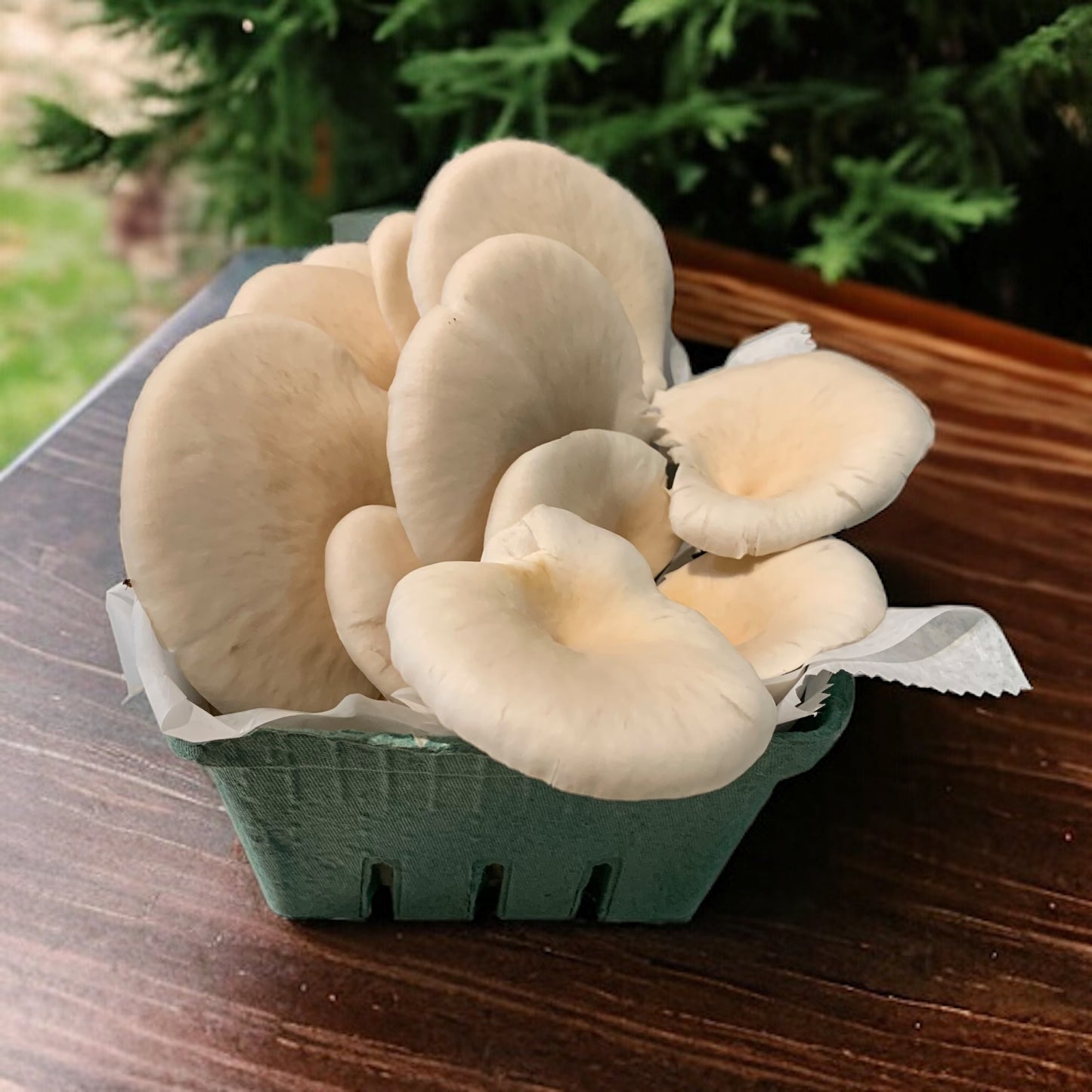Not your typical oyster mushroom, Elm Oysters belong to the genus Hypsizygus. They are firm and have a nutty flavor that can hold up well in any recipe including soups and stews.
The Elm Oyster mushroom is a relatively uncommon species of Oyster mushroom. Closely resembling Pleurotus Oyster Mushrooms, but held consensus is that Elm Oysters are superior in flavor and texture.
Here’s a summary of the flavor profile of Elm Oyster Mushrooms (Hypsizygus ulmarius):
Mild flavor: Elm Oyster Mushrooms as mild, subtle, and delicate.
Nutty flavor: A nutty or earthy undertone to the flavor.
Firm texture: Similar to scallops, which makes them a good meat substitute in vegetarian and vegan dishes.
Elm Oyster Mushrooms can take on the flavors of aromatics like lemongrass, leeks, ginger, and garlic when sautéed. In general, Elm Oyster Mushrooms are considered to have a more delicate flavor compared to other oyster mushroom species, such as Pleurotus ostreatus. However, their mild flavor and firm texture make them a versatile ingredient for a variety of dishes, from soups and stews to stir-fries and salads.
Here are some benefits associated with Elm Oyster Mushrooms (Hypsizygus ulmarius):
Studies have shown that Elm Oyster Mushrooms possess antioxidant, anti-inflammatory, and anti-tumor properties, making them a potential natural remedy for various diseases.
Elm Oyster Mushrooms are a useful source of protein, making them a nutritious addition to vegetarian and vegan diets.
Elm Oyster Mushrooms are relatively easy to cultivate at home, making them accessible to mushroom enthusiasts and hobbyists.
Research has identified compounds in the mycelium and fruiting body of Elm Oyster Mushrooms with potential anti-inflammatory, antioxidant, anti-tumor, and anti-diabetic properties, making them a promising medicinal fungus.
Elm Oyster Mushrooms can be grown on paper, straw, logs, and other substrates, making them a versatile species for cultivation.
Unlike some white rot fungi, Elm Oyster Mushrooms have a moderate ability to dissolve lignin, which can be useful for bioremediation and environmental applications.
The fungus’s ability to break down organic matter and pollutants makes it a potential tool for mycoremediation, the use of fungi to clean up environmental pollutants.
Elm Oyster Mushrooms have cultural and historical significance in some regions, particularly in China, where they are considered a medicinal fungus.



